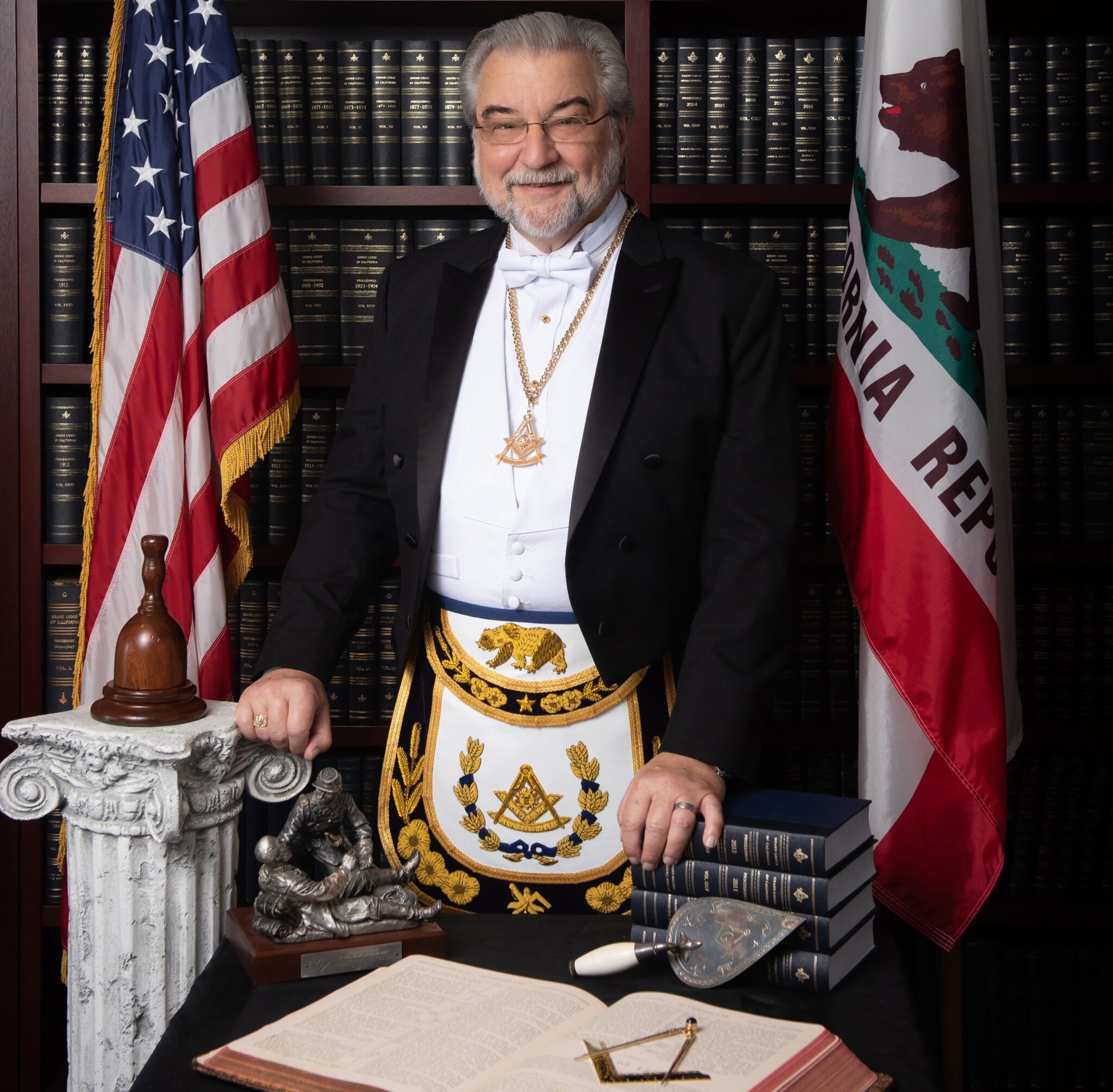
Grand Master Randy Brill: In Small Towns, A Lodge Is a Civic Center
Grand Master Randy Brill explains what small-town Masonry can teach us all.
There’s a parade coming through town. It might be Independence Day, or Christmas, or Memorial Day, or something much more niche. In North Bloomfield, in the Sierra foothills, the tiny burg hosts an annual Humbug Day parade that boasts of being the shortest procession in the world. In Gridley, near Chico, it’s a firefighter-themed Red Suspender Days festival. Other towns have their own traditions. In just about every case, though, you’ll find the local Masonic lodge.
There may be no surer sign of small-town life than the big parade. Which is why it’s no surprise that, up and down the state, California Masons make a point of flying their colors in these processions. In places like Penryn (population 878), Shasta (1,639), and Taft (8,651), Masonic lodges enjoy an esteemed role in civic life and retain an important connection to local history. “In these towns, the lodge has always been part of the fabric of the community,” says Deputy Grand Master Sean Metroka, a member of several Sierra foothill lodges.
That makes the experience for small-town Masons unique. While the the degrees, lessons, and philosophy of Freemasonry are unchanged, the focus of lodge life could hardly be more different than in Los Angeles or the Bay Area. “We don’t have the same number of people to draw from, so we’ve got to really promote the lodge to get our name out there,” says Lee Wilbourne, master of Nevada № 13 in Nevada City (population 3,114). “Being visible in the community, that’s our face. That’s who we are.”
It cuts both ways. While financial challenges and member-recruitment problems are constant in small towns, those same lodges are often in a stronger position to make an impact in their communities.
That may be as simple as lodge members volunteering at a clothing drive or lending their hall for a school fundraiser. Or manning the grill at a high school football game or handing out a scholarship to a local student. Kevin Herrick, the assistant lodge secretary at Texas № 46, in San Juan Bautista, puts it plainly. “Our purpose as a lodge is to be known as a charitable contributor to the town. The idea of improving yourself, that part comes on its own— almost as a side effect.”
That’s an important lesson, and one that lodges everywhere would do well to heed. Even if no one throws them a parade.
Above: The sun rises over San Juan Bautista, California. At the bottom of the image, the historic Texas Masonic Lodge No. 46 is visible (in white and green trim)—one of several quintessentially small-town lodges throughout the state. Photo by Winni Wintermeyer.
There’s a parade coming through town. It might be Independence Day, or Christmas, or Memorial Day, or something much more niche. In North Bloomfield, in the Sierra foothills, the tiny burg hosts an annual Humbug Day parade that boasts of being the shortest procession in the world. In Gridley, near Chico, it’s a firefighter-themed Red Suspender Days festival. Other towns have their own traditions. In just about every case, though, you’ll find the local Masonic lodge.
There may be no surer sign of small-town life than the big parade. Which is why it’s no surprise that, up and down the state, California Masons make a point of flying their colors in these processions. In places like Penryn (population 878), Shasta (1,639), and Taft (8,651), Masonic lodges enjoy an esteemed role in civic life and retain an important connection to local history. “In these towns, the lodge has always been part of the fabric of the community,” says Deputy Grand Master Sean Metroka, a member of several Sierra foothill lodges.
That makes the experience for small-town Masons unique. While the the degrees, lessons, and philosophy of Freemasonry are unchanged, the focus of lodge life could hardly be more different than in Los Angeles or the Bay Area. “We don’t have the same number of people to draw from, so we’ve got to really promote the lodge to get our name out there,” says Lee Wilbourne, master of Nevada № 13 in Nevada City (population 3,114). “Being visible in the community, that’s our face. That’s who we are.”
It cuts both ways. While financial challenges and member-recruitment problems are constant in small towns, those same lodges are often in a stronger position to make an impact in their communities.
That may be as simple as lodge members volunteering at a clothing drive or lending their hall for a school fundraiser. Or manning the grill at a high school football game or handing out a scholarship to a local student. Kevin Herrick, the assistant lodge secretary at Texas № 46, in San Juan Bautista, puts it plainly. “Our purpose as a lodge is to be known as a charitable contributor to the town. The idea of improving yourself, that part comes on its own— almost as a side effect.”
That’s an important lesson, and one that lodges everywhere would do well to heed. Even if no one throws them a parade.

Walk to the south end of cozy Main Street in Ferndale, with its historically preserved taverns, inns, and Victorian storefronts, and you’re sure to run into the handsome Masonic lodge. That’s what the tourists all seem to do.
“People come down Main Street and end up standing in front of the lodge,” says past master Lee Astorino. For years, Astorino worked in a picture-framing shop just a block away. Whenever out-of-towners asked about the majestic-looking building down the street, he’d grab his keys and give them an impromptu tour. “I’m happy to show the lodge off, because I love it.”
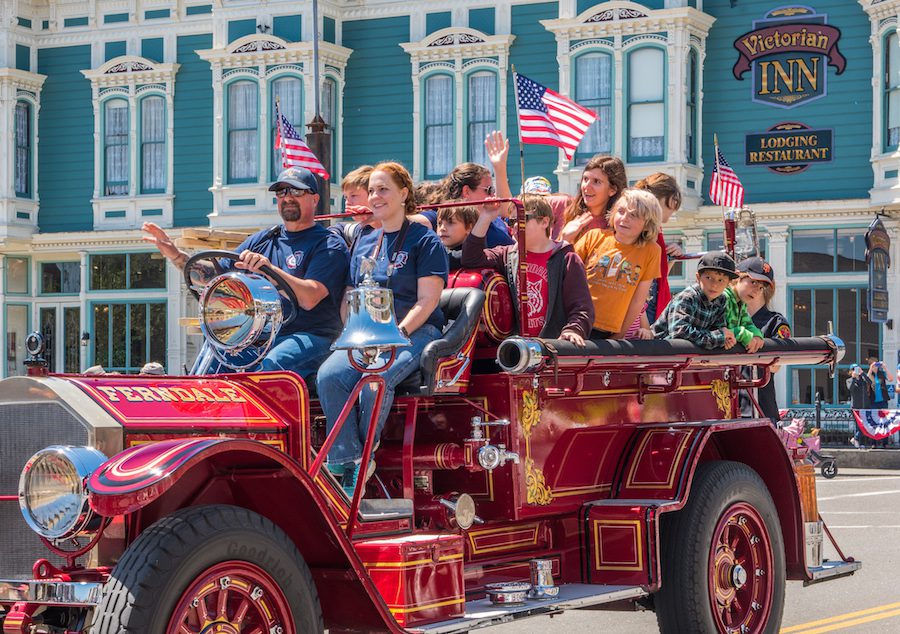
The Ferndale lodge may seem too picturesque—too charming—to be true. Built in 1891 by lodge member Ira Russ, the hall is an example of the 19th-century Eastlake-Stick architectural style. The building survived earthquakes a century apart, in 1906 and 1992, and today remains the meeting place of the local Masons, plus chapters of the York Rite, Eastern Star, and all three Masonic youth orders. It’s also part of the Ferndale Main Street Historical District, which is on the National Register of Historic Places. But members say there’s more to it than venerable antiquity. “There’s a real camaraderie here. Everybody just gets along,” says past master and current lodge secretary James Grinsell. “Every Monday, whether we’re practicing or not, we go up there and have coffee.”
Astorino concurs. “We’re a friendly group,” he says. “I think we’re a great bunch of guys. I’m a little prejudiced on that, but when I was a kid, my dad had a lodge, and I always wanted a group of friends like he had. I found it here.”
Ferndale № 193 fits neatly into its bucolic surroundings. The lodge fields the biggest float in the town’s annual Independence Day parade, and it hosts an annual cleanup day at the nearby Ferndale Cemetery, where many of the headstones date back to the 1860s. Every year, the lodge also sponsors an essay-writing contest with local schools and gives out a pair of college scholarships.
That sense of tight-knit community is especially important to Astorino. In the wake of his wife’s death, he says, his fellow Masons rallied around to support him. “Without the Masonic family, I couldn’t have made it through,” he says. “Anything I needed, almost before I’d even asked, it was there that day. That’s the type of lodge we have. You have a need, they’re there.”

Indian Wells № 684, in Ridgecrest, is situated amid wildly contrasting terrains. It’s within an hour of both the highest and lowest points in California: Mt. Whitney to the north and the Badwater Basin to the east. To the west are the snowy slopes of the Sierra Nevadas. The serenity of the scene is occasionally pierced by the booming sound of fighter jets above, their way to or from the nearby China Lake flight-testing facility. Many of the lodge’s members are veterans, civilian support technicians, or active-duty service men from the Naval Air Weapons Station China Lake—a base larger than the state of Rhode Island.
Current lodge master Steve Goad first came to China Lake as a Navy test pilot. Keenly aware of the community’s connection to the military, he says, the lodge has strong ties with veterans groups, including the VFW and American Legion. It actively supports local Memorial Day and Veterans Day events, which are a mainstay in the community.
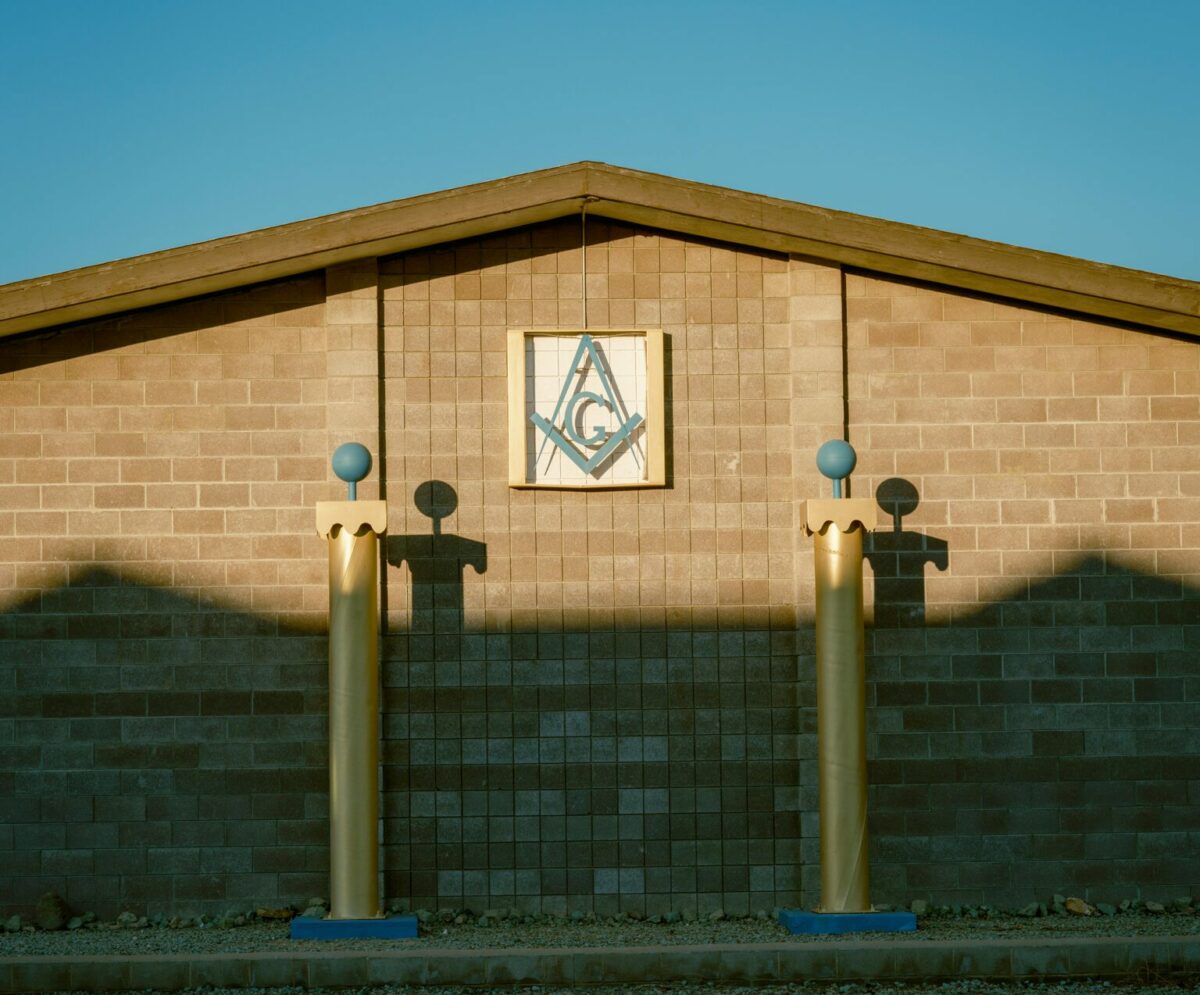
Goad views the lodge as a pillar for the community, with a key role to play in keeping civic life vibrant. The lodge sponsors a float in the city’s annual parade, and members including Goad have even volunteered to lead tours of the nearby Coso petroglyph district, a canyon range that includes more than 100,000 Native rock paintings dating back some 3,000 years. (Goad says he’s arranged tours of the range for visiting Masonic dignitaries.) Since 2016, the Ridgecrest Petroglyph Festival has become one of the largest draws for the town, with some 20,000 visitors touring the grounds and listening to Native American music and performances.
Jeremy Carroll, the lodge secretary, grew up in the area and recalls seeing the Masonic square and compass on cornerstones around town. That brought him to the low-slung Indian Wells Valley Masonic Lodge.
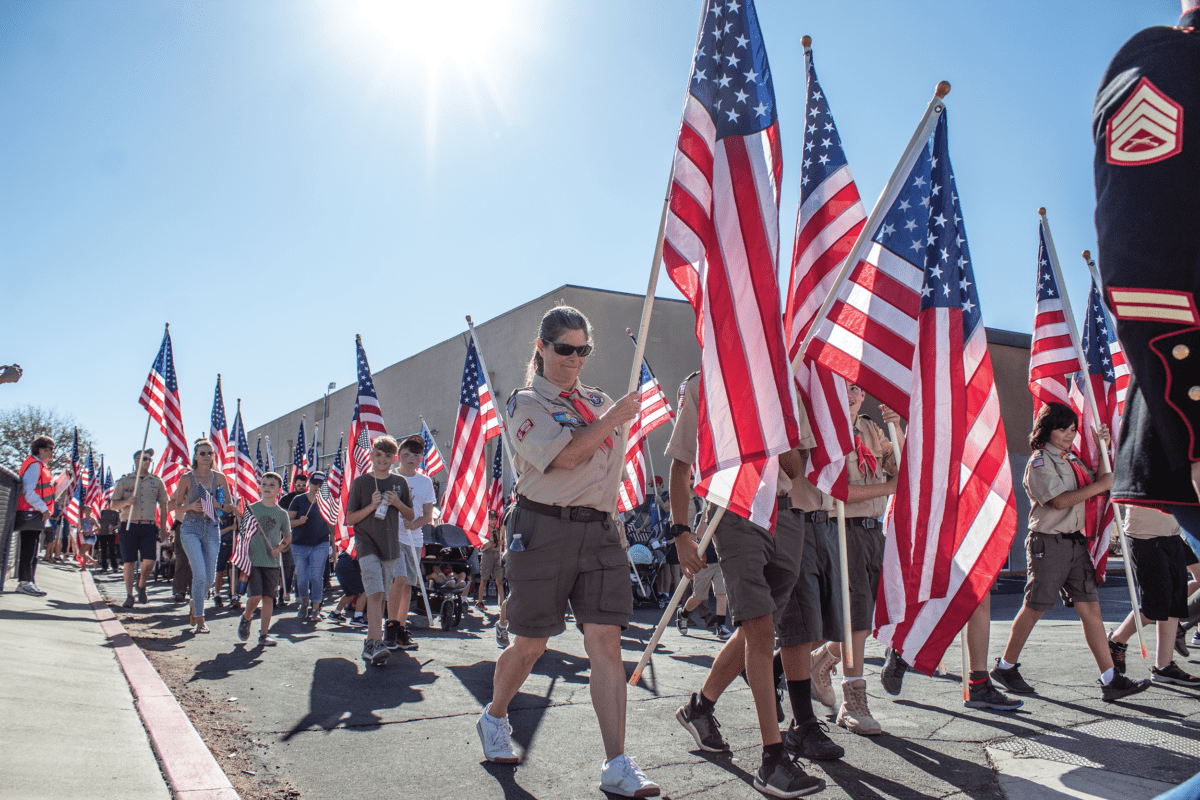
“I basically researched for a few years and then finally petitioned because I liked what I saw,” Carroll says. “It was only after I joined that I found out I’ve had Masons in my family for generations.”
Goad, for his part, is cognizant of the competition for attention that Masonry faces today, and he pays particular attention to cultivating Masonic education and enrichment through quality ritual work and tiled discussions. “Some, but not all, of our members are seeking that connection with esoteric ideas,” he says. “I’m encouraged when I see that.”
Lodge master Steve Goad meets with fellow lodge members at Indian Wells Valley № 684. Photos by Matthew Reamer.
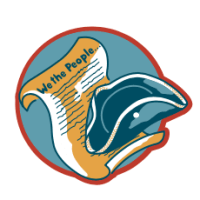
There’s no missing the members of Nevada № 13. They’re the ones in the powdered wigs and tricorn hats. At least they are one weekend a year, when one of the most anticipated events in the quaint foothills town of Nevada City occurs.
Every year since 1967, members of Nevada № 13 have donned their ceremonial 1770s garb to take part in a historical reenactment of the signing of the Declaration of Independence, a highlight of Nevada City’s annual Constitution Day parade. Billed as the largest such parade in the West, it was first organized by lodge member Col. Bill H. Lambert. Today, a prize in his name is given in recognition of outstanding contributions to the community.
Since Lambert’s time, the parade has grown to include a rubber-duck race down Deer Creek, organized by the Rotary Club; a procession of marching presidents and first ladies; a Revolutionary War reenactment; and a concert. Today it’s among the scenic town’s most popular events of the year, with visitors numbering in the thousands. Nevada № 13 continues to underwrite the festivities. The parade director is typically a past master of the lodge, and the Grand Master of California is almost always honored as its grand marshal.
“It’s a big deal,” says Lee Wilbourne, current master of the lodge. “It gets us a lot of exposure, and we open up the lodge all weekend so anyone who wants to come over and have breakfast can come in. We’re all very tight with people in town.”
While the parade is a highlight of the lodge calendar, it isn’t the lodge’s entire raison d’être. Indeed, the lodge has distinguished itself in recent years as one of the most charitable in the state. In 2018, it pledged $370,000 to the California Masonic Foundation’s Let’s Write the Future campaign. And its philanthropy committee has directed more than $40,000 to local nonprofits in recent years. Says Wilbourne, “That’s how we get ourselves out there. In addition to being a good thing to do, it helps our profile. It shows we’re real human beings. Otherwise, as Masons, we tend to be crappy at promoting ourselves.”
Other than the costumes, of course.
Then-Grand Master of California Jeff Wilkins, his wife, Liz, and current Deputy Grand Master Sean Metroka led the way during September’s Constitution Day parade in Nevada City. Nevada № 13 has sponsored the annual event since the late 1960s. Photo by Chris Kaufman.

James Morgan describes his home lodge, Big Bear № 617, as a “destination lodge,” and with good reason. A stunning lakeside resort town 7,000 feet above sea level in the San Bernardino National Forest, Big Bear is known for its idyllic mountain landscapes and world-class skiing. Unsurprising, then, that the local lodge should play frequent host to out-of-towners. In fact, the lodge is perhaps the state’s most-called-upon spot for lodges looking to confer a degree in a special setting. “We’re way up in the mountains, and we’re different from your usual city lodges,” Morgan says. The lodge embodies its mountain surroundings to a tee, especially with its interior clad
in rustic knotty pine. Tables are held up by tree-trunk legs, and on one wall a giant bearskin is stretched out beside a Masonic square-and-compass set inside deer antlers.
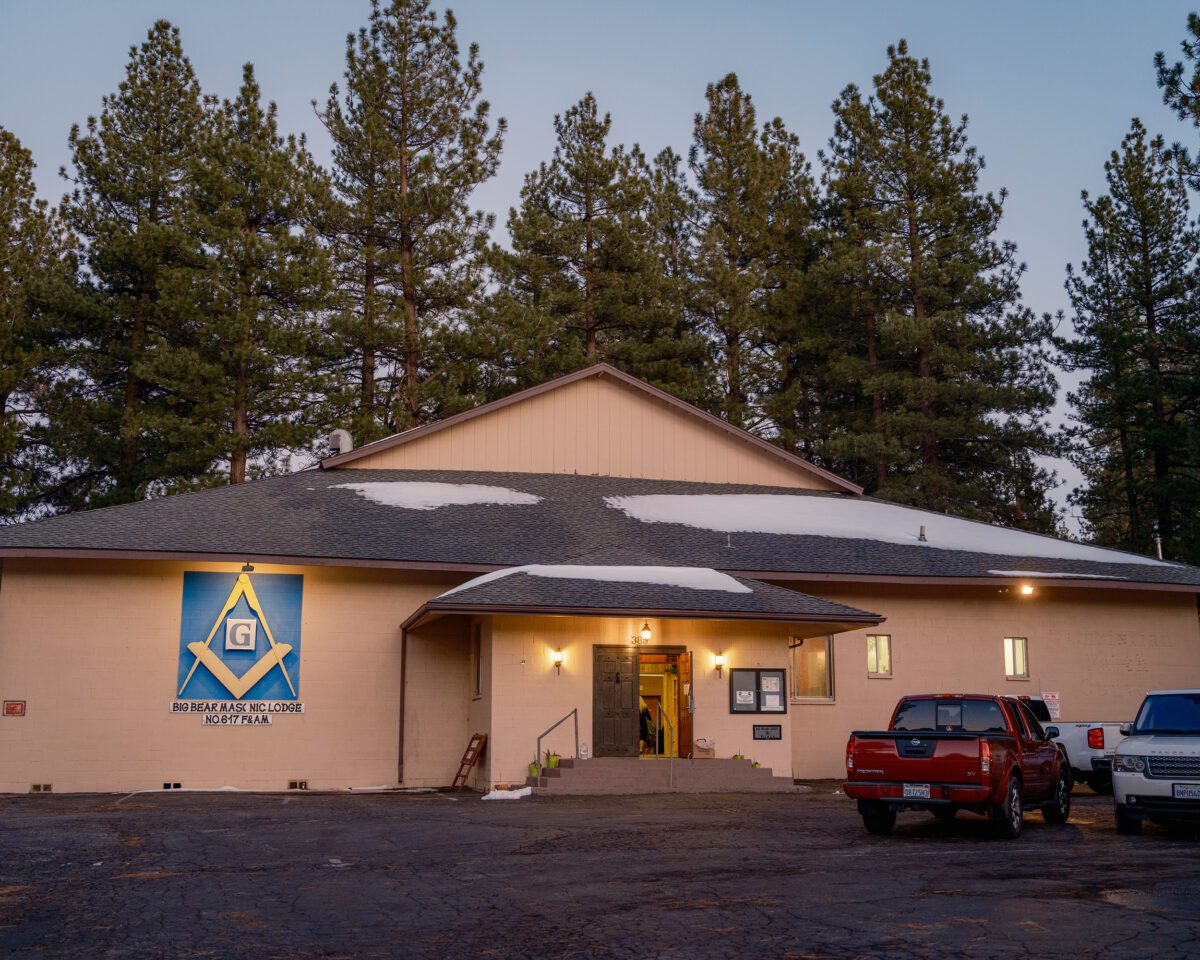
Unlike much of the town’s population, which rises and falls with the ski season, Morgan is a Big Bear lifer. “I remember getting run off from the lodge parking lot for skateboarding when I was a kid,” he says. Amid the comings and goings of tourists and visitors, lodge members are similarly rooted in the community. They use the hall to host several community-service events, including an annual blood drive, a Halloween festival, and a clothing and food drive. Members also make a point of being active in local government, with a group from the lodge attending school board, city council, and chamber of commerce meetings. The lodge even hosts a series of non-partisan candidate forums and debates in the run-up to local elections.
That means Big Bear № 617 is seen as particularly invested in civic life, Morgan says. “Our installation of officers is covered by the local newspaper,” he points out. Current master Johnny Ray Wells says that community leaders often attend that event, as well as other public functions at the lodge.
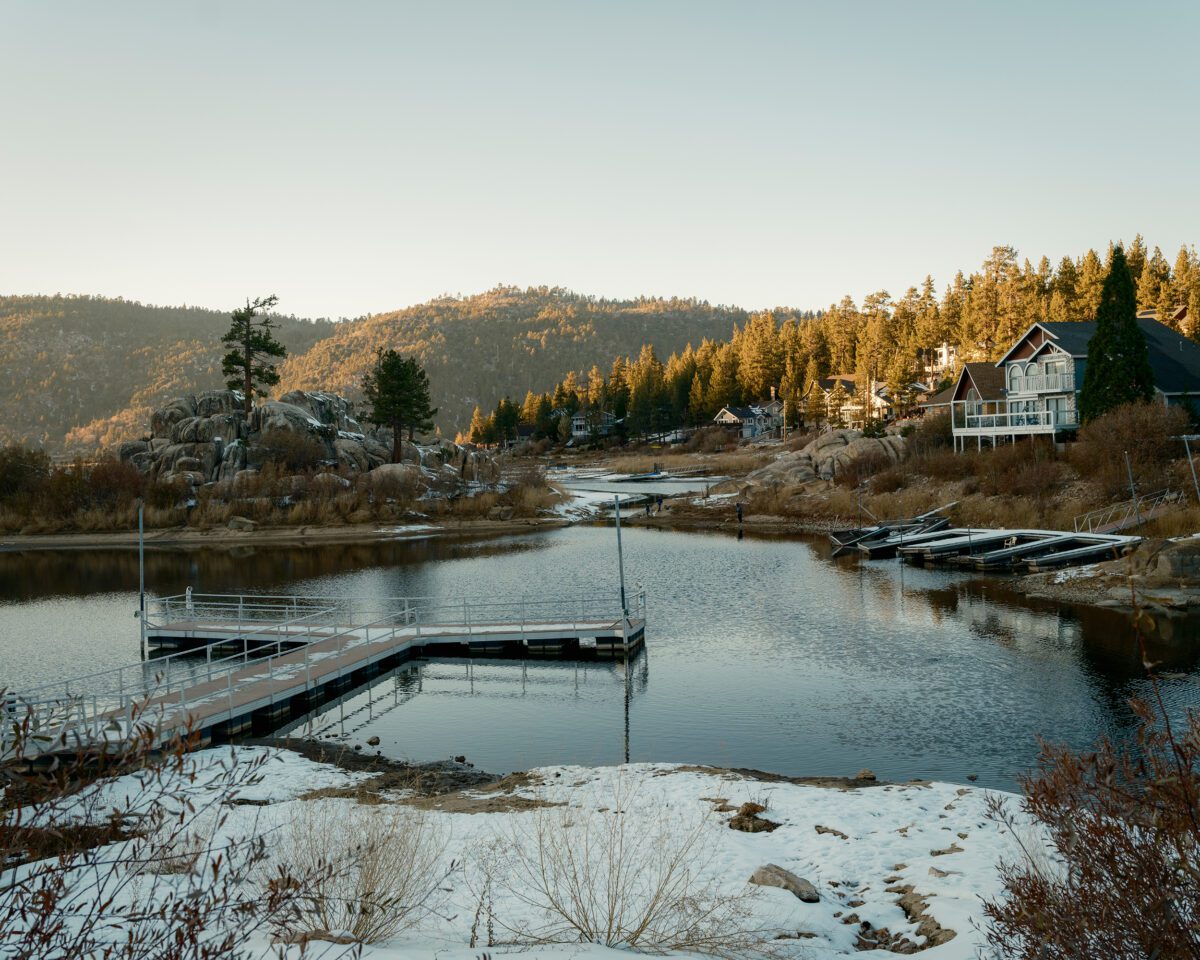
Wells, Morgan, and others have also cultivated efforts to strengthen the member experience. Wells, for instance, founded an initiative he calls the Northeast Corner, an in-depth discussion on the nuances of Masonic ritual. For all the lodge’s public-facing efforts, he says, “Some members are looking for the spiritual side of Masonry—to feed the soul.” Morgan, for his part, kicked off regular office hours for lodge leaders—practically unheard of elsewhere. Each weekday, members take turns staffing the lodge hall during regular business hours, meeting with visitors, giving tours of the space, and answering questions about Freemasonry.
A big effort, yes. But, he says, anything is worth it to make a more welcoming destination.
Lodge members at Big Bear No. 617 gather for a degree ceremony inside the rustic lodge hall. Photos by Matthew Reamer.


The members of Visalia № 128 have been known to wear their affection for Freemasonry on their sleeves. And their chest. And their calves. In fact, the popularity of Masonic tattoos is something of a running joke at lodge. “I look around some-times and think, ‘We look like a bunch of trestleboards walking around,” says lodge master Ronald Morrison with a chuckle, referring to the illustrated Masonic poster charts.
Morrison, who goes by Shorty, counts himself among that group. On his elbow, he has a tattoo of the 47th problem of Euclid (also known as the Pythagorean Theorem), a geometric principle that holds special symbolic meaning to Masons. However, tattoos aren’t the only way lodge members put their membership on display. More than most, Morrison says, Visalia № 128 has worked to make itself an integral—and visible—fixture in town.
The lodge certainly has a long history in that regard: Formed in 1859, it was for several years the fraternity’s only outpost between Stockton and Los Angeles. Many of its earliest members helped found the towns of the San Joaquin Valley, including Thomas Baker, a charter member of Visalia № 128, for whom Bakersfield is named. Another important namesake was early lodge member Nathaniel Vise, who legend has it, along with his wife, Salia, lent his name to the frontier town. Ever since, the lodge and its members have played an important role in developing Visalia from a small farm town into what is now one of the fastest-growing metro areas in the state.

The lodge continues to make an effort to be seen in the community. Each year members team up with the local branch of the Red Cross to host a large blood drive at the lodge hall, handing out branded T-shirts and other merchandise. They also sponsor a Teacher of the Year award, presented annually at the lodge, alongside scholarships for several local public school kids. First-time visitors are always given a tour of the distinctive, circa-1935 Art Deco Masonic temple on West Mineral King Avenue.
In every case, the idea is for the community to see Freemasonry in action.
This fall, Visalia № 128 lived up to that mantra for a special event. Working with eight other valley lodges, the lodge hosted its first-ever movie night at the restored Visalia Fox Theatre. The screening—of the 2004 Nicolas Cage film National Treasure, with its veil of Masonic imagery—was open to the public and free of charge. Past Grand Master Richard Hopper, a member of the lodge, reports that the event drew more than 120 attendees, including many non-Masons. “It was a tremendous event,” he says, “and one I hope we try again.”
The exterior of the circa-1935 art deco Visalia Masonic Temple, home to Visalia № 128. Photo by Debra Jane Seltzer, roadsidearchitecture.com.
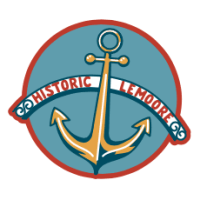
The membership of Lemoore’s Masonic lodge, Welcome № 255, reflects the military character of the town. Since the 1940s, the armed services have been a major employer in the area, both for active duty and civilian personnel, and many veterans retire there. Today, Naval Air Station Lemoore is home to the Navy’s largest master jet base, with the Strike Fighter Wing Pacific and Carrier Air Wings squadrons stationed there attached to aircraft carriers including the USS Nimitz and USS Ronald Reagan.

As a result, the lodge is made up primarily of military men—as many as 80 percent of its 169 members are affiliated with the base in one way or another, estimates Pedro Bautista Jr., the current lodge master. Bautista is one of them, a Navy veteran who discovered Freemasonry at a military lodge in Guam while still on active duty as a chief petty officer.
Because military life is often transient, requiring quick deployments to far-flung locales, a military lodge like Lemoore’s can serve as a home away from home for military Masons. That makes Welcome № 255, well, a welcome sight for Masons who find themselves stationed in Kings County. But it also means members must sometimes ship out unexpectedly after several months of degree preparation. “Time seems to move slower in a small town than in a big city,” Bautista says. “So there’s plenty of time to learn the craft, to be proficient, and when the time comes for our active-duty brothers to move on, they’ll be ready for their next travels.”
Bautista says that frequent shuffling makes it even more important for the lodge to attract a stable base of members from the surrounding community.
“We make ourselves visible through the local schools,” he explains. The lodge sponsors a robust annual scholarship for students from four high schools and is now planning its first fundraiser for the elementary school located next door to the Masonic hall. The lodge also organizes frequent picnics, camping trips, and family dinners, and contributes a float to the town’s annual Christmas parade, with a hand-built illuminated square and compass. Bautista sees efforts like these as part of his obligation as a Mason. “It’s incumbent on every member to reach out and be present in the community,” he says. “That’s what it all about.”
An exterior view of Welcome Masonic Lodge No. 255 in Lemoore, California. Courtesy of Pedro Bautista.
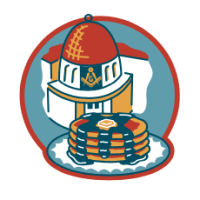
It hasn’t been a straight line back to normal from the depths of the pandemic for most of us. Certainly that’s the case for members of North Butte № 230, a small, historic lodge in the northern Sacramento Valley, at the base of the Sutter Buttes mountain range.
Like many farm towns, Gridley today is still working its way back. The tree-lined downtown, which extends a few blocks along Hazel Street, includes several pleasant brick storefronts, but many of them remain empty. The distinctive North Butte № 230 lodge hall, with its domed roof, sits just around the corner. It, too, is trying to make a comeback.
Sometimes, these things start small—with, say, the resumption of time-honored traditions. By that measure, this year represents an important turning point.
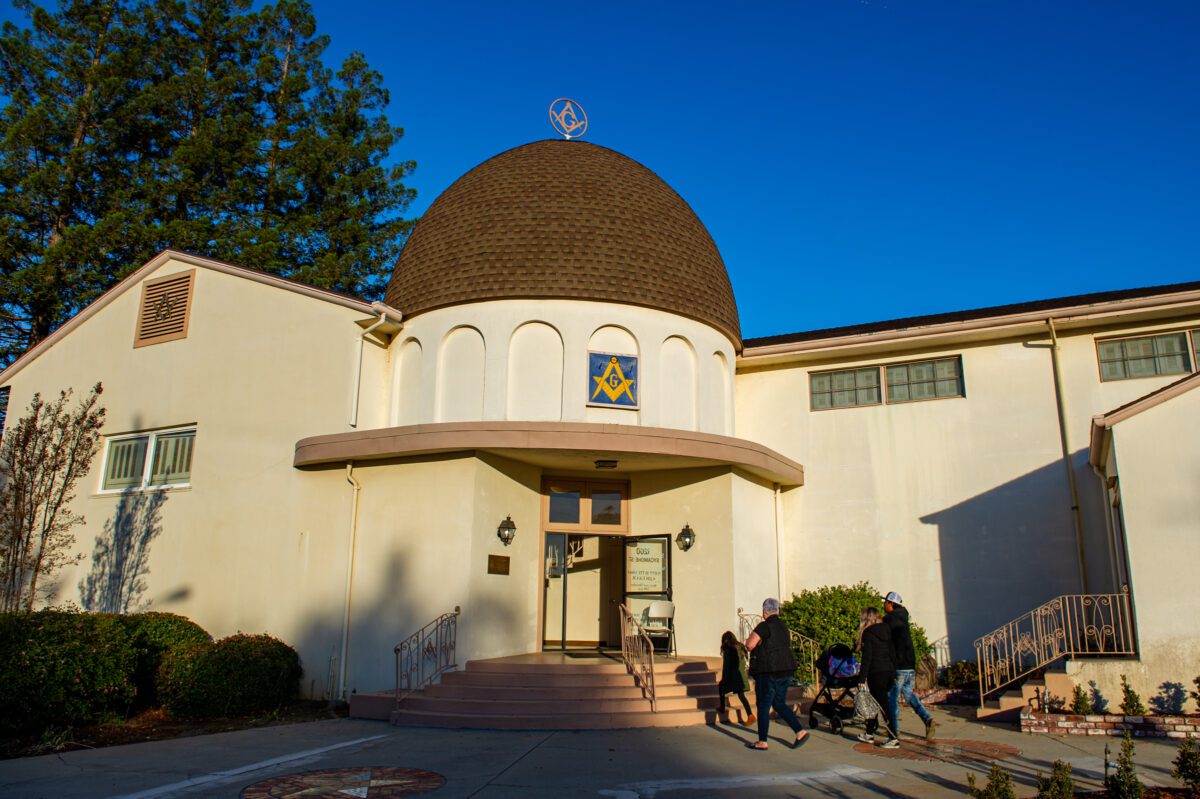
This fall, North Butte № 230 was able to restart its 15-year-old scholarship program, which had been paused during the pandemic. Historically, the lodge selects two students at each of the area’s three high schools to receive a modest college stipend, which it hands out at an annual pancake breakfast. (The lodge extends the scholarship for those who remain in school a second year.) Since it began, members have given out more than $40,000 through the events, not only helping local kids make a dent in higher-education costs, but also establishing the lodge as an ally of local schools. “We’re trying to get it built up again,” says master John Gill, a third-generation Mason whose father also belonged to North Butte № 230. “COVID really set us back. We’ll get there, it’s just going to take some time.”
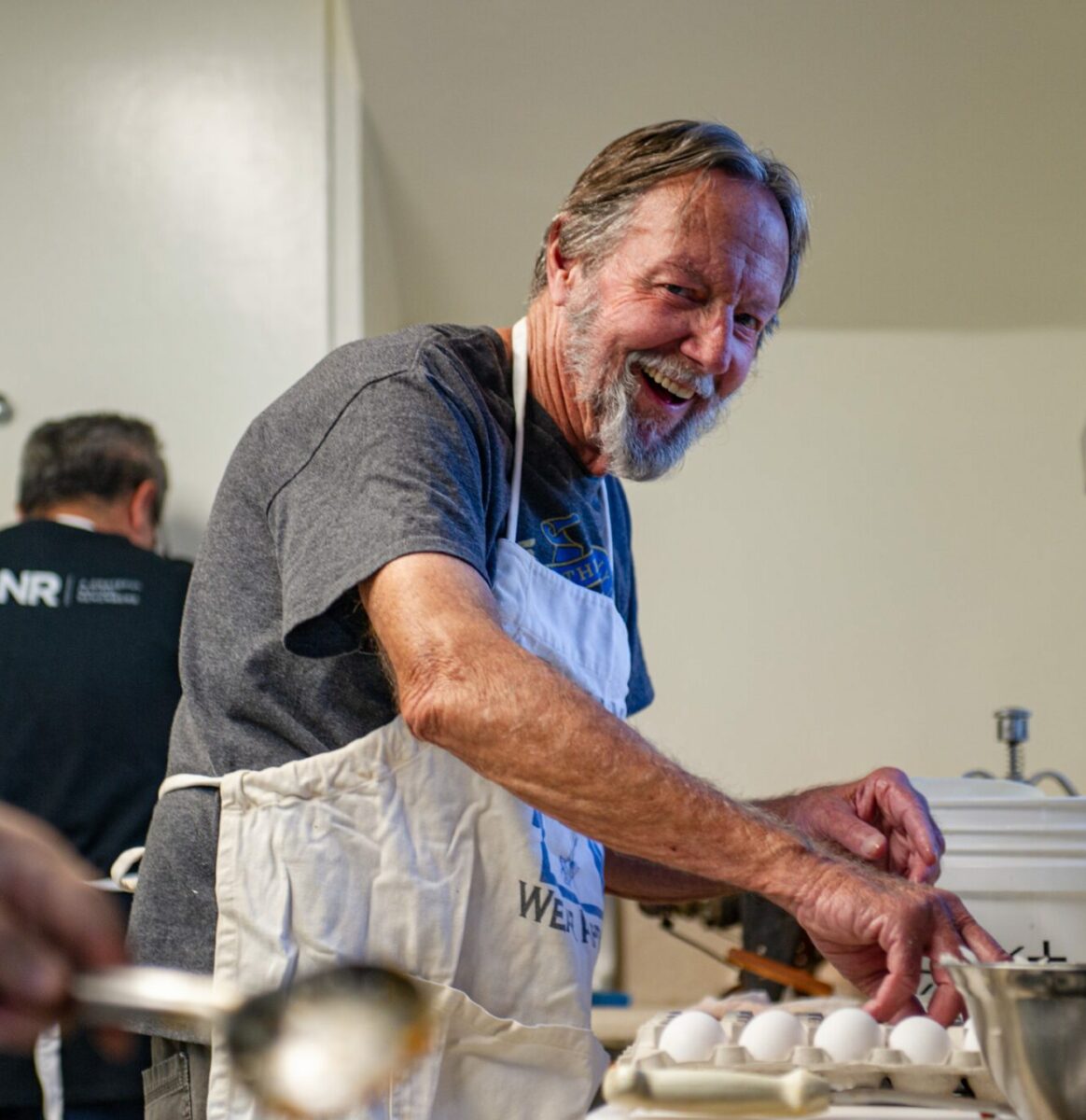
Things haven’t gone entirely dark over the past couple of years. Even with the scholarship program on hold, the lodge, located across the street from Sycamore Elementary, has managed to stay active with the school district in other ways: It hosts Sycamore’s yearly book fair in its banquet room, with lodge members volunteering and hosting an ice-cream party. The lodge also sponsors a high school basketball tournament, which provides important publicity. Says past master John Neiswanger, “It gets us out in front of the community. I don’t know if people pay attention to the name North Butte № 230, but they know the name of the Masons. They know we’re the Masons here, and they know what we’re doing.”
Formerly the kiwi capital of the world, Gridley remains an agricultural town, although today its main exports are rice, almonds, and stone fruit. (One large kiwi vineyard remains in town.) Gill says the lodge retains its rural character. “When I lived in L.A., I didn’t know my own next-door neighbor,” he says. “Here, we’re a community—our whole district. So we do our part to help each other.”
Members of North Butte № 230 gather for their yearly pancake breakfast, during which the lodge issues college scholarships to local high school students. Photos by Chris Kaufman
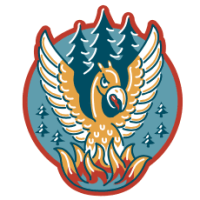
To say that Table Mountain № 124 has risen from the ashes may sound cliché. But in this case, it’s really true. Four years ago, the Camp Fire tore through the area of Butte County known as Paradise Ridge. More than 150,000 acres burned, including 18,000 structures. Eighty-five people died. Fire damage was estimated at $16.5 billion, making it the most destructive conflagration in state history.
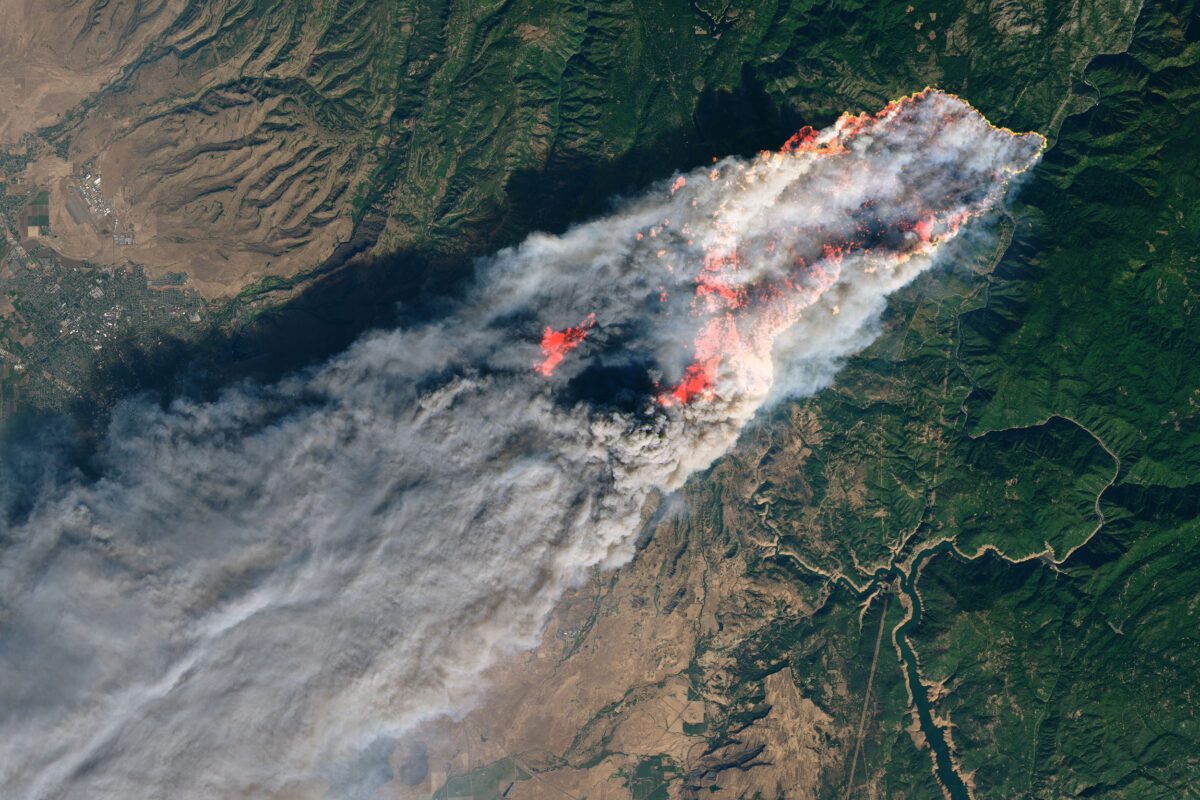
The fire decimated everything in its path— almost. Miraculously, the lodge’s circa-1936 hall is still standing. Five strike teams of firefighters worked diligently to save the building and an adjacent library, even as the fire consumed a shopping center across the street and the building next door. On every side of the lodge, the landscape was reduced to rubble. Yet the structure stood fast, albeit with significant smoke damage to its interior, plus to the electrical and plumbing systems. “We say providence provided for us,” says Douglas Campbell, the junior warden, choking up at the memory.
The circa-1936 stone facade survived the Camp Fire.
Once the immediate threat had passed, the few members who remained in the area gathered at Chico-Leland Stanford № 111 to decide on their future. In Paradise, the fire had leveled an estimated 95 percent of the structures. Most of the region’s 70,000 evacuated residents chose not to return. In fact, the overall population of the town remains about one-fifth what it was before the fire. In lodge terms, out of a roster of 75, only about 20 members stayed in the area.
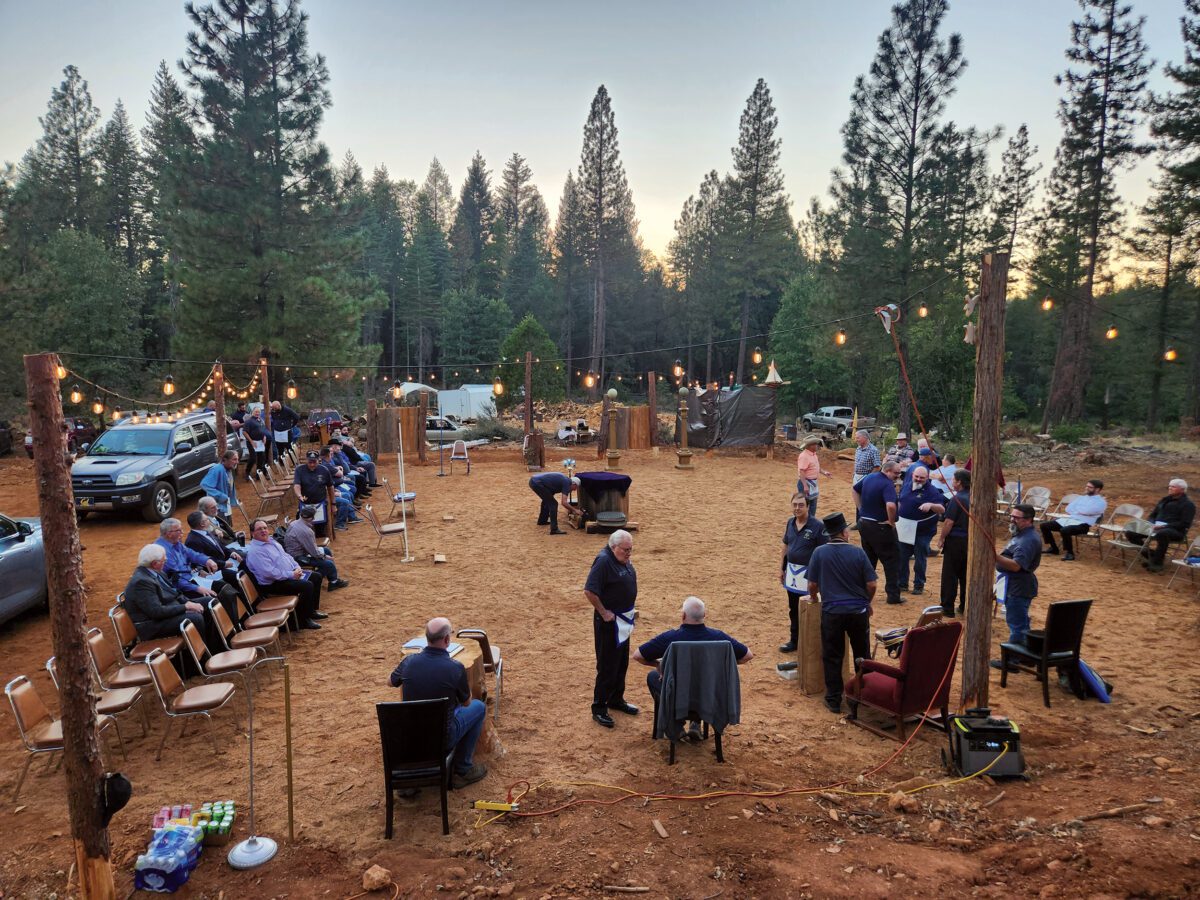
Still, those present were adamant. “The first meeting, [lodge master] Bill Richards asked everyone if we wanted to fold or consolidate,” recalls current master Woody Nelson. “It was unanimous. The resounding answer was, Hell no!”
Instead, the group met in Chico while soldiering through months of repairs in Paradise. The first year back was a struggle. But by continuing to meet, the group established a foothold. In late 2019, they returned to the Paradise hall. A few months later, when COVID-19 brought in-person meetings to a halt, the group stayed close over Zoom.
Though the lodge was unable to gather inside the hall, they put the building to good use, renting it to church groups, governmental agencies, and relief providers. The lodge soon became one of the most important and recognizable landmarks left in town. “In a way, I think we’re more present now,” Campbell says of the lodge. “We’re more visible, more known, and more involved than ever before.”
Increasingly, members checked back in—and a few new ones began to inquire. Campbell says the lodge has brought in an incredible 12 new members this year. “I tell people we really were reborn as Masons,” he says. It was with that spirit in mind that the lodge decided to host a special kind of celebration this fall: An outdoor, nighttime degree.

Nelson, who lives on a ranch 20 miles north of town, hosted the event. A team of members helped clear brush for a makeshift lodge room, while others used chainsaws and more than a little elbow grease to fashion officers’ stations, an altar, and lodge regalia from trees felled during the fire.
Finally, on October 15, nearly 70 members gathered to see Justin Harju raised to the third degree. Among the visitors were representatives from Chico-Leland Stanford № 111 and Scepter № 143, both invited in recognition of the support they’d lent the lodge during the aftermath of the fire. “We’re coming out of the ashes,” Nelson says. “I can’t tell you how proud I am of this group.”
The distinctive stone facade of Table Mountain Masonic Lodge No. 124 in Paradise, California. Unbelievably, the lodge survived the massive 2018 Camp Fire. Photo by Kyle Nelson.
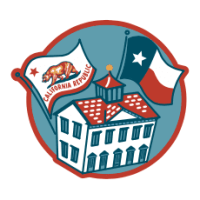
It would make sense for members of Texas № 46, in San Juan Bautista, to focus their lodge efforts close to home. After all, their hall dates from 1869, making it either the longest- or the second-longest continuously occupied lodge in the state. The blue and white Italianate Victorian structure, with its arched windows and molded pediments, is among the most striking buildings in the mission town.
Yet just as frequently, Texas № 46 sets its sights on the outside world.
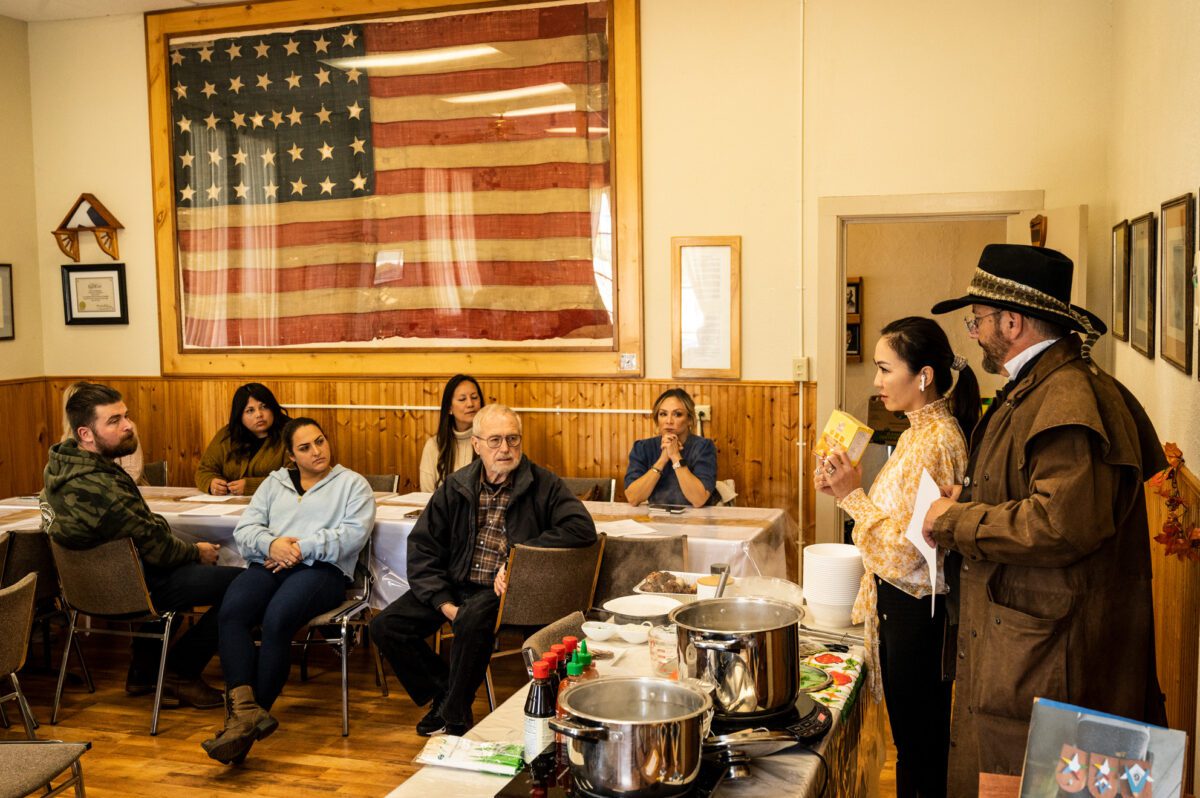
“We’re always trying to come up with ways to make our lodge experience unique or provocative,” says Kevin Herrick, the current senior warden. Each year, the presumptive master polls the membership before planning the following year’s events. “We like to tailor our activities each month to the needs and desires of our brothers. So that might be a motorcycle ride to Monterey, or going whale watching with our wives.”
The result is a lodge calendar that’s far from typical. Among the recent activities was a trip to Virginia City, Nevada, where lodge members marched in a parade honoring Captain Edward F. Storey, the first master of Texas № 46. Storey, who also founded Visalia № 128, moved to Virginia City in the 1850s, following the Comstock Lode, where he was elected captain of the local militia. He died there in a fight with the Paiute Indians, and at his funeral, local Masons formed plans for what would become Escurial № 7. That lodge continues to honor Storey’s memory each year at the site of his grave.
More than a dozen members of Texas № 46 and their families made the trip to Nevada for the event, which included a Civil War re-enactment and Masonic funeral service.
That wasn’t the longest trip the lodge has made this year. A few weeks earlier, a team of Masons from Texas № 46 rented a van for the 12-hour drive to Prescott, Arizona, to attend the third-degree ceremony for Garrett Wright, who was initiated in San Juan Bautista before moving south for work. Before that, the lodge took advantage of its circa-1850s “traveling degree” charter, which allows it to host meetings within seven miles of the lodge, to put on a third-degree ceremony for Charles Baylacq. The event was held at scenic Fremont Peak state park.
“We have to be creative in finding ways to appeal to people,” Herrick says. That extends to charity work, which includes partnering with nonprofits like the local food bank and school district. “They key is to have an active calendar, so that you can have meetings that are meaningful and are able to make a real connection with the local community,” Herrick says. “Then it feels good to raise money. People feel good about being a Mason.”
The circa-1869 lodge hall of Texas Masonic Lodge No. 46 in San Juan Bautista. Photos by Winni Wintermeyer.
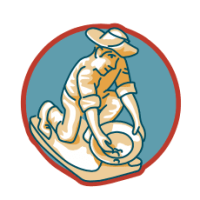
“This past month was huge for us,” begins Douglas Tucker, a past master of Eureka № 16 in Auburn. The lodge hosted several community events, including a chili cook-off to benefit Masons4Mitts, held its yearly first responders appreciation dinner, and transformed the lodge hall into a polling place for election day. In addition, the lodge also threw its annual picnic—to which family and friends are invited—and past master Rick Hodkin hosted a long-discussed Dungeons and Dragons game night. On top of all that, the lodge initiated four new members, held one second-degree night, and accepted two new affiliations.
Looking forward, the calendar was just as full. Since resuming in-person meetings in 2021, it’s been full steam ahead at Eureka № 16, which was chartered in 1851, making it is one of the state’s oldest lodges. Yet another first-degree night was being planned for later in the month, with a further eight prospects lined up in the queue. Add to that a series of scholarship programs to administer, a community outdoor-movie night program to restart, and an ongoing partnership with the Forgotten Soldier Project, which uses Eureka’s space for restorative yoga classes for veterans, and there’s seldom a dull moment in the circa-1916 lodge hall. Says Tucker,“The guys we have right now on our roster want to be Masons. They want to be active.”
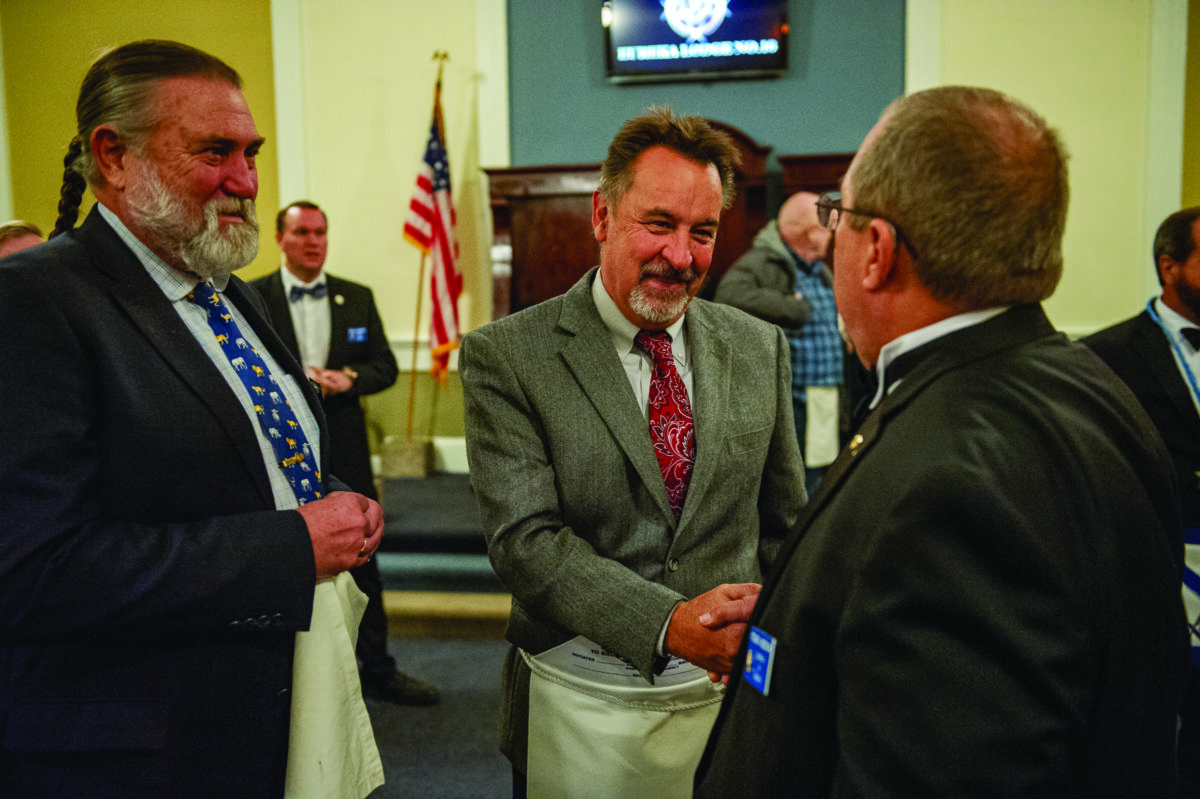
That’s music to the ears of longtime Auburn Masons. Having survived a fallow period a few years back, during which the lodge saw several officers step away, the lodge has experienced a recent revival. “We have a fantastic group in place right now,” says master Steve Bodick.
Members credit that to a strong string of recent officers, plus a renewed commitment to community service projects and a particular focus on performing excellent degrees. “We have a lot of pride and a little bit of competitiveness about it,” Tucker says of the lodge’s obsession with the ritual. “We consider ourselves a premier lodge in that regard. It’s part of our culture. People here try to be word-perfect as a matter of personal pride.”
That enthusiasm extends to community service, where the lodge has made a point of strengthening its volunteer and charitable efforts. That, in turn, helps raise the lodge’s profile locally. “It’s a small community,” Bodick says. “Being out there helps us with word-of-mouth interest.”
The more interest, he says, the more inquiries. And the more inquiries, the more degrees, the more events. It doesn’t bring any relief to the packed calendar, he says—but that’s a good thing.
The circa-1916 Masonic Hall in Auburn, home to Eureka № 16, is one of the Gold Country town’s most distinctive buildings. Photos by Chris Kaufman
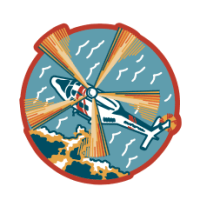
In the summer when temperatures might reach 117 degrees, the desert town of Blythe can be downright dangerous. Even without the heat, the scrubland near the Arizona border is an unforgiving place, one that unprepared campers, backpackers, and day-trippers too often find themselves unable to manage.

When that happens, it’s up to the local search and rescue team to save the day—with an unseen assist from the local lodge.
Over the past five years, Blythe-Needles № 473 has developed a close relationship with the all-volunteer Riverside County search and rescue. Three members of the lodge, including past master and district inspector Stu Ryan, are volunteers with the program, which is run through the sheriff’s department. The team uses the lodge building for its training sessions and as a general headquarters during emergencies—all free of charge. The two bodies also team up on fundraisers including a yearly raffle for the duck and dove hunters who pour into the area each fall, which lodge master Larry Wuertz says help pay the considerable cost of outfitting vehicles to bushwhack through the desert.
During the summer, the town of Blythe largely shuts down. In fact, the lodge recently won approval to go dark three months of the year, in order to save on what had become an unmanageable electric bill. During the fall, however, the town sees an influx of campers and outdoorsmen on their way to the Colorado River. And in winter, it more than doubles in size for the annual Desert Gardens International Rock, Gem, and Mineral Show in nearby Quartzsite, Arizona. “In the summer, you wonder why there are so many gas stations here, but then in the winter you see why,” explains lodge secretary Kevin Crain.
Some of those out-of-towners find their way into the lodge. “We never know who’s going to show up for a stated meeting,” Crain says.
Far from a part-time resident, Crain is one of the town’s most deeply rooted residents. His father, John, was master of the lodge and president of the Palo Verde College board, while his brother, Robert, served as mayor for 16 years. Those kinds of close relationships help the lodge make its impact felt locally. “There’s a lot of love for the lodge in this community,” Ryan says.
That’s most evident during Blythe’s annual Christmas parade, which Crain’s family has run for more than 20 years. This year, the local Shriners, plan to show up in their signature go-karts. “That out to spruce things up a bit,” says Wuertz with a laugh.
The sun sets over the main drag in the desert town of Blythe, California, home to Blythe-Needles Masonic Lodge No. 473. Photo by Alamy.

Grand Master Randy Brill explains what small-town Masonry can teach us all.
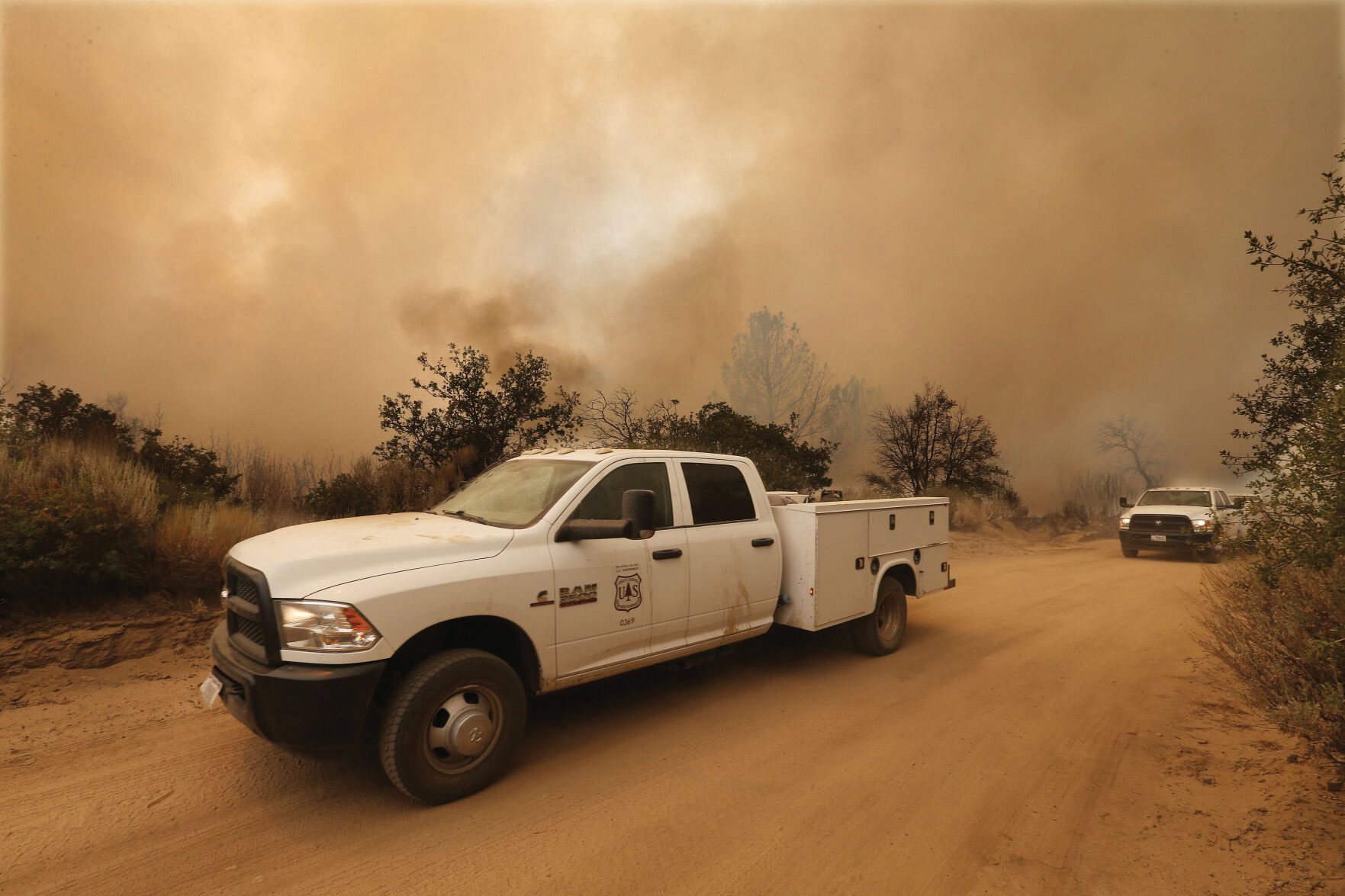
When fire threatened their community, members of Kern River Valley No. 827 turned to their greatest asset to provide Masonic relief.
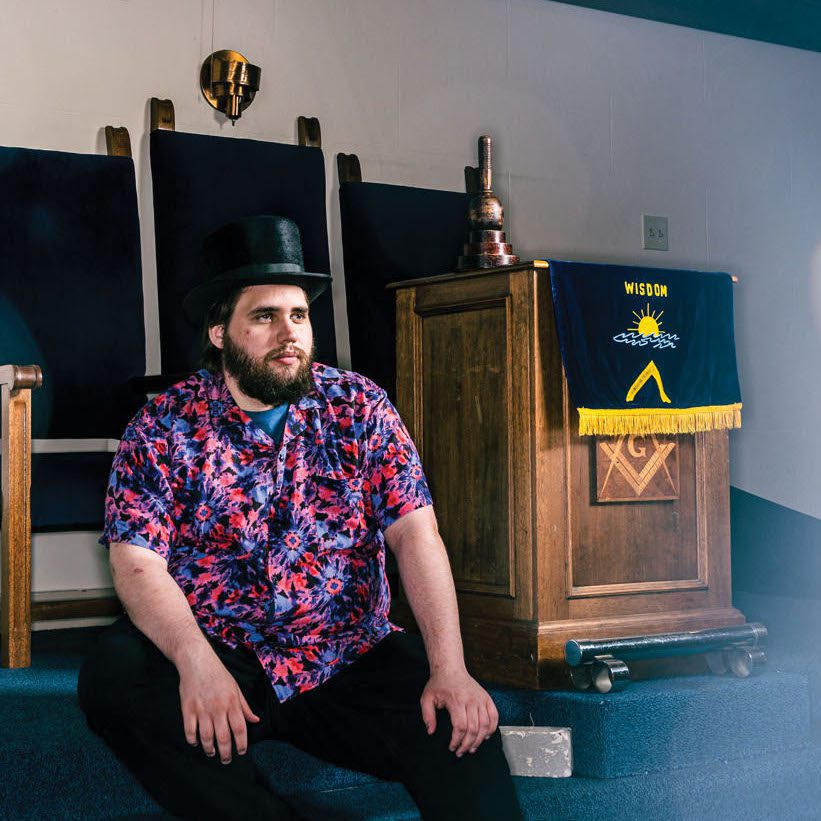
A new, younger generation of Masons is increasingly rising through the leadership ranks of the fraternity.